By Keith Grabowski
No coach succeeds alone. The best ones surround themselves with a network of trusted mentors, peers, and rising stars who challenge their thinking and fuel their growth. In a recent Think Tank discussion, I sat down with three football minds—Mike Giancola (Defensive Coordinator, Roanoke College), Rob Everett (Offensive Assistant, Miami Dolphins), and Cody Alexander (Founder, Match Quarters)—to break down the best ways to network, learn from other coaches, and make the most of coaching visits.
Their insights provide a roadmap for any coach looking to expand their knowledge and build meaningful connections in the game.
1. Overcoming the Fear of Reaching Out
Early in his career, Giancola struggled with the idea of reaching out to higher-level coaches. He shared a moment that changed his perspective:
“I was intimidated when I was a high school coach to reach out at times to the higher levels. But you just have to get over that. If they don’t respond, they don’t respond. But if they do, you can probably get some pretty good stuff out of it.”
Too often, coaches assume they need an introduction or a certain résumé to connect with top minds in the profession. The truth? Most coaches enjoy talking ball. The key is being respectful, coming prepared, and making the interaction meaningful.
2. The Best Networking Happens with Peers
It’s easy to idolize the big names, but Everett pointed out that the real career-changing relationships happen with your coaching peers:
“Your peers are the ones that are going to be hiring you. If you’re looking for a job, that’s your network. The 60-year-old guy at the top? You’re in different places in life. But the guys grinding it out alongside you now? They’ll be in positions to bring you in later.”
Rather than chasing connections with famous head coaches, focus on building relationships with other coordinators, position coaches, and quality control assistants. These are the people who will grow in the profession alongside you—and bring you opportunities along the way.
3. Don’t Overlook Lower-Level Coaches
Many coaches focus only on connecting with big-time college or NFL coaches, but Alexander stressed that some of the best insights come from coaches in the trenches at lower levels:
“Don’t be afraid of the lower-level coaches. A lot of times, they’re the ones actually developing players and scheming to overcome talent gaps. They’re solving real problems that can apply to your team.”
Instead of just reaching out to Power 5 or NFL coaches, look at successful high school, Division III, and FCS coaches. Their creativity and adaptability often translate better to different levels of football.
4. Maximizing Coaching Visits and Clinics
Once you’ve established connections, how do you make the most of coaching visits and clinics? Everett shared a key tip:
“There’s nothing worse than when someone visits and says, ‘Talk to me about offense.’ That’s too broad. The best visits happen when you come in with specific questions and a clear agenda.”
Here’s how to optimize your visits:
- Research first – Know what the team runs before you show up.
- Have specific questions – Instead of “Tell me about defense,” ask, “How do you adjust your match quarters rules against condensed formations?”
- Take notes and record (if allowed) – Organize your takeaways so you can implement them later.
- Follow up – A simple thank-you email and a follow-up question keep the door open for future conversations.
5. The Hidden Gems: Talking to QCs and Analysts
When visiting a staff, most coaches want time with the coordinator. But Alexander pointed out that the real gold often comes from the quality control coaches and analysts:
“The guy that knows the defense the best is usually the QC guy. He’s the one running the cutups, padding the film, and seeing the problems before anyone else. That’s the guy you want to talk to.”
Rather than waiting for a brief conversation with a big-name coach, spend time with the guys who do the daily grind. They often have more time and are willing to share deeper insights.
6. Connecting at Clinics: Be Intentional
Clinics can be overwhelming. With dozens of speakers and hundreds of coaches in attendance, it’s easy to walk away with a notebook full of ideas but no real connections. Alexander recommended being strategic:
“Go see a coach speak first before visiting his program. That way, you know if his philosophy aligns with yours. Then, when you visit, you have meaningful questions instead of just showing up blind.”
At clinics, take these steps:
- Target sessions that align with your coaching philosophy
- Introduce yourself after the talk – A quick handshake and follow-up email can lead to a future visit.
- Network during breaks – Some of the best conversations happen in hallways or over meals.
7. Using Social Media to Build Your Network
Today, networking extends beyond face-to-face interactions. Everett pointed out that platforms like Twitter (X) and YouTube have changed the way coaches share ideas:
“There’s never been a better time to learn from other coaches. If you’re not using social media to connect, you’re missing out.”
Use social media to:
- Follow coaches who share valuable insights.
- Engage in discussions—don’t just consume content; interact with it.
- Share your own insights to contribute to the conversation.
8. Getting the Most Out of Every Interaction
At the end of the day, networking is about relationships, not transactions. Giancola put it best:
“With everything we have to do in coaching, sometimes just sitting down and talking ball is the best way to learn.”
The best connections happen naturally when you’re genuinely interested in learning. Whether it’s a clinic, a staff visit, or a Twitter exchange, approach it with curiosity, respect, and an open mind.
Take Action Today
- Identify three coaches you want to connect with and reach out.
- Plan a coaching visit and prepare specific questions in advance.
- Attend a clinic with a networking strategy—who do you want to meet?
- Follow and engage with at least five coaches on social media.
- Take notes on what you learn and find ways to apply it in your program.
Building a strong coaching network isn’t just about job opportunities—it’s about becoming a better coach. The more you connect, the more you learn, and the more you grow.


